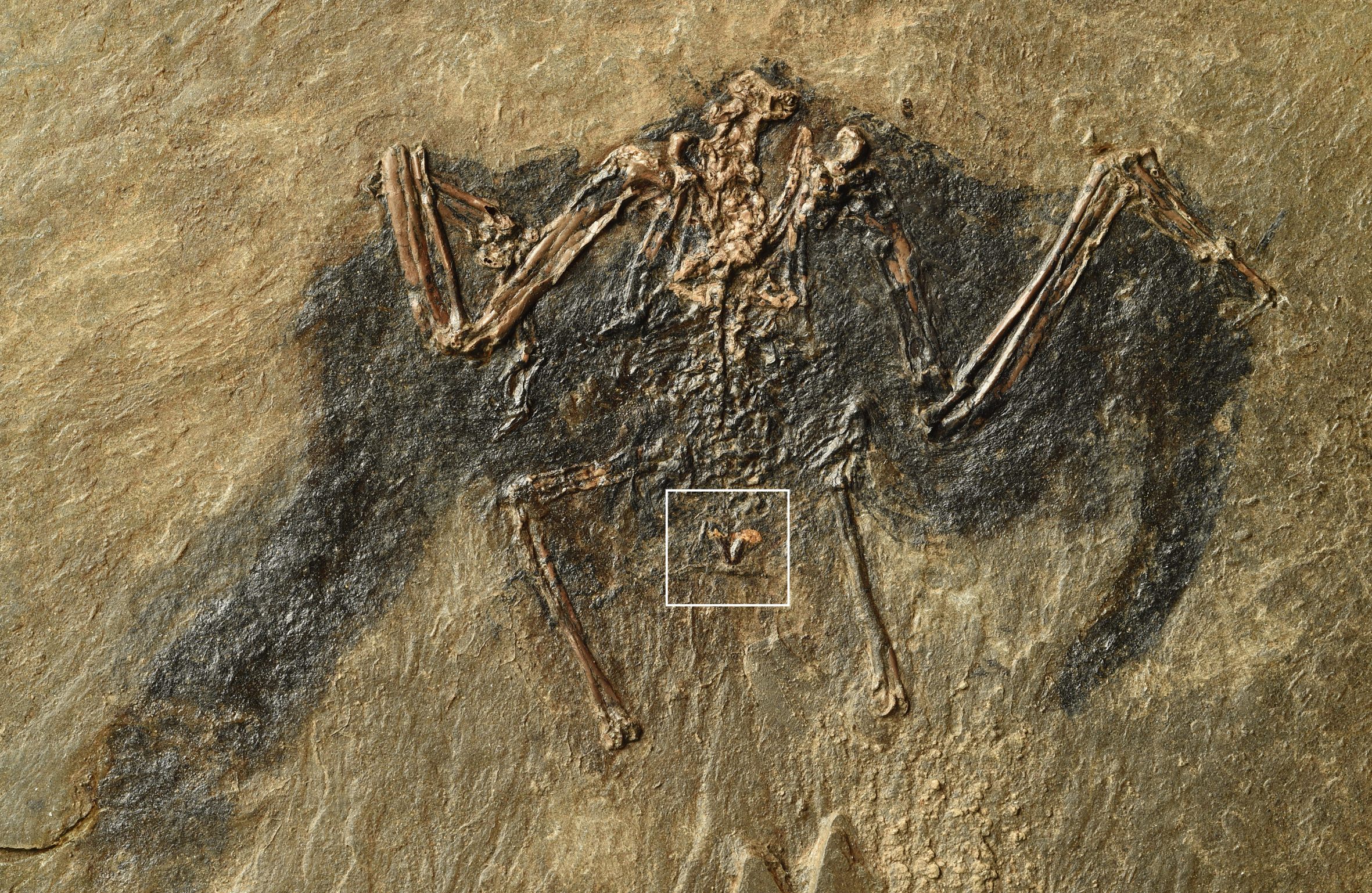We Now Have Evidence That Birds Preened Their Plumage 48 Million Years Ago
Did feathered dinosaurs do the same?

Most birds have a small gland on the top of their tails, hidden under their feathers. The uropygial gland, it’s called, secretes a waxy, fatty substance called preen oil that birds slather all over themselves using their beaks and sometimes their feet. Preen oil offers critical protection against water and microbes, and even has cosmetic benefits—flamingos use their carotenoid-laden preen oil like make-up to make their feathers even more pink. Despite how common the gland is in birds, and how important it can be to their health and survival, we actually don’t know whether their ancestors—the dinosaurs—had such glands too. Fossilized soft tissue is extremely rare, so that question remains unanswered. But new research has uncovered the oldest example of a uropygial gland yet, and demonstrates that we may be able to identify one if we ever find the right dinosaur fossil.
A former lake in Germany, the Messel Pit Fossil Site, contains an exceptional number of fossils that preserve some imprint or remnant of soft tissue. An international team of researchers took a closer look at a bird specimen excavated from the site that appears to hold evidence of a uropygial gland. It’s not the first specimen found with the gland, but it could be the oldest—at 48 million years old. To confirm that what they saw in the fossil really was the gland (and not some other structure), the team looked for evidence of preen oil at the molecular level.
They compared samples of the fossilized gland, the surrounding rock, fossilized feathers, and preen oil from modern birds. The fossilized gland was distinctly different from the rocks and fossilized feathers around it, and the scientists found molecules in the gland that are very similar to ones from modern preen oil. “The lipids have kept their original chemical composition, at least in part,” said George Mayr, one of the coauthors of the report, in a statement. Mayr and his colleagues aren’t sure why the lipids survived for so long, but they think preen oil’s antimicrobial properties may have protected the uropygial gland’s soft tissue from breaking down too quickly to be preserved.
“If we find more of these lipids, we will be able to better reconstruct the lifestyle of these animals,” said coauthor Jakob Vinther in a statement. “For example, it would be interesting to find out whether feathered dinosaurs, as the ancestors of birds, already possessed uropygial glands and preened their plumages.”


























Follow us on Twitter to get the latest on the world's hidden wonders.
Like us on Facebook to get the latest on the world's hidden wonders.
Follow us on Twitter Like us on Facebook